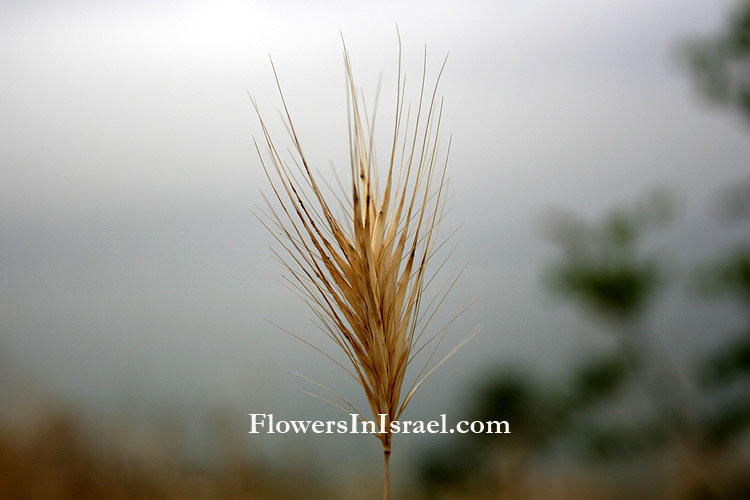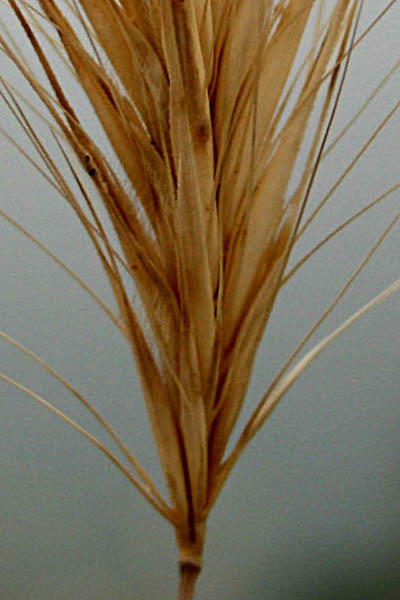Hebrew: ברומית מאוגדת, Arabic: الشويعرة , شعير , زرعه
| Scientific name: | Bromus fasciculatus C.Presl | |
| Common name: | Fascicled brome | |
| Hebrew name: | ברומית מאוגדת | |
| Arabic name: | الشويعرة , شعير , زرعه | |
| Plant Family: | Graminea (Poaceae), Grass Family, משפחת הדגניים |

|
| Life form: | Therophyte, annual | |
| Stems: | Erect or geniculately ascending, 5–20(–25) cm tall, pubescent below inflorescence | |
| Leaves: | Alternate, leaf sheaths pubescent, entire; leaf blades 2–10 cm × 1–2 mm, hairy | |
| Flowers: | Panicle racemelike, stiffly erect, 2–5 × 0.7–2 cm; green, purple | |
| Fruits / pods: | Caryopsis ellipsoid, longitudinally grooved, apex hairy | |
| Flowering Period: | March, April, May | |
| Habitat: | Batha, Phrygana, Shrub-steppes, Desert | |
| Distribution: | Mediterranean Woodlands and Shrublands, Semi-steppe shrublands, Shrub-steppes, Deserts and extreme deserts, Montane vegetation of Mt. Hermon | |
| Chorotype: | Mediterranean | |
| Summer shedding: | Ephemeral |

Derivation of the botanical name: Bromus, from the Greek broma, "food", and bromos, "oat". fasciculatus, clustered, growing in bundles. The Hebrew word:ברומית, bromit, from the foreign languages.
|